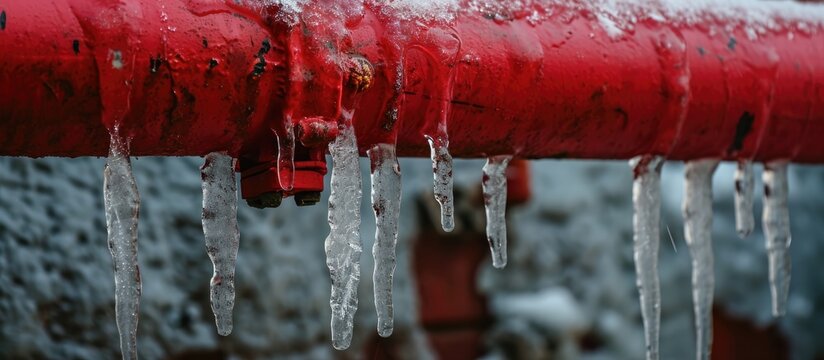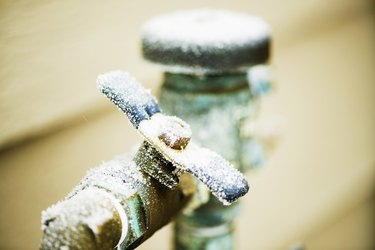Guidance for Preventing Frozen Pipes in Cold Weather: Expert Insights
Guidance for Preventing Frozen Pipes in Cold Weather: Expert Insights
Blog Article
What're your thoughts regarding Winter Plumbing Precautions: Preventing Frozen Pipes?

Winter can damage your pipes, especially by freezing pipes. Right here's exactly how to prevent it from taking place and what to do if it does.
Intro
As temperatures drop, the threat of frozen pipelines boosts, potentially resulting in costly repairs and water damages. Comprehending exactly how to prevent icy pipelines is vital for house owners in cold environments.
Prevention Tips
Shielding prone pipes
Cover pipelines in insulation sleeves or utilize warmth tape to protect them from freezing temperature levels. Focus on pipelines in unheated or exterior areas of the home.
Home heating techniques
Keep indoor rooms effectively warmed, specifically areas with plumbing. Open closet doors to permit warm air to circulate around pipes under sinks.
Exactly how to recognize frozen pipes
Try to find lowered water circulation from taps, unusual odors or noises from pipelines, and noticeable frost on exposed pipelines.
Long-Term Solutions
Architectural modifications
Think about rerouting pipes far from outside walls or unheated areas. Include additional insulation to attics, cellars, and crawl spaces.
Updating insulation
Buy top notch insulation for pipes, attic rooms, and walls. Correct insulation assists maintain regular temperatures and lowers the danger of frozen pipes.
Shielding Exterior Plumbing
Yard hose pipes and outdoor faucets
Separate and drain pipes yard pipes prior to wintertime. Install frost-proof spigots or cover outdoor taps with shielded caps.
Understanding Icy Pipes
What triggers pipelines to freeze?
Pipelines ice up when exposed to temperature levels listed below 32 ° F (0 ° C) for extended durations. As water inside the pipelines ices up, it expands, putting pressure on the pipe walls and possibly creating them to break.
Risks and damages
Frozen pipes can cause water disruptions, residential or commercial property damage, and costly repair services. Burst pipes can flood homes and cause extensive structural damages.
Indicators of Frozen Piping
Identifying frozen pipelines early can avoid them from rupturing.
What to Do If Your Pipes Freeze
Immediate activities to take
If you believe frozen pipelines, keep faucets open to soothe pressure as the ice thaws. Utilize a hairdryer or towels soaked in warm water to thaw pipelines slowly.
Conclusion
Stopping frozen pipelines requires aggressive steps and fast responses. By comprehending the reasons, signs, and safety nets, homeowners can safeguard their pipes throughout cold weather.
6 Proven Ways to Prevent Frozen Pipes and Protect Your Home
Disconnect and Drain Garden Hoses
Before winter arrives, start by disconnecting your garden hoses and draining any remaining water. Close the shut-off valves that supply outdoor hose bibs and leave the outdoor faucet open to allow any residual water to drain. For extra protection, consider using faucet covers throughout the colder months. It’s also important to drain water from any sprinkler supply lines following the manufacturer’s directions.
Insulate Exposed Pipes
Insulating your pipes is an effective way to prevent freezing. Pipe insulation is readily available at home improvement stores and is relatively inexpensive. Pay close attention to pipes in unheated areas such as the attic, basement, crawl spaces, or garage. Apply foam insulation generously to create a buffer against the cold. You can also wrap your pipes in heat tape or thermostat-controlled heat cables for added warmth.
Seal Air Leaks
Inspect your home for any cracks or openings that could let in cold air. Seal any holes around the piping in interior or exterior walls, as well as the sill plates where your home rests on its foundation. Additionally, make sure to keep your garage door closed unless you’re entering or exiting. Leaving it open creates a significant air leak that can lead to frozen pipes.
Allow Warm Air Circulation
During cold snaps, it’s essential to allow warm air to circulate evenly throughout your home. Leave interior doors ajar to promote better airflow. Open kitchen and bathroom cabinets to help distribute heat consistently around the rooms. If you have small children or pets, be sure to remove any household chemicals or potentially harmful cleaners from open cabinets for safety.
Let Faucets Drip
A small trickle of water can make a big difference in preventing ice formation inside your pipes. When temperatures drop significantly, start a drip of water from all faucets served by exposed pipes. This continuous flow helps prevent the water from freezing. Additionally, running a few faucets slightly can relieve pressure inside the pipes, reducing the chances of a rupture if the water inside does freeze.
https://choateshvac.com/6-proven-ways-to-prevent-frozen-pipes-and-protect-your-home/

I was made aware of that article about Helpful Tips to Prevent Frozen Pipes this Winter through an associate on our other website. Sharing is good. Helping people is fun. Thank-you for going through it.
Learn More Report this page